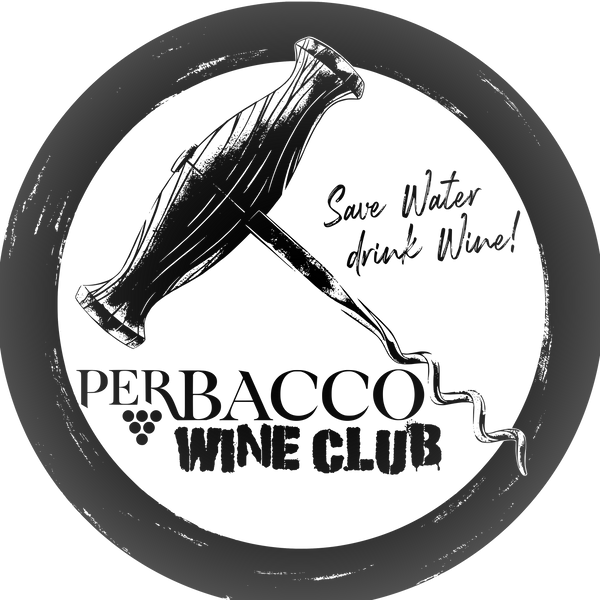We told you, we would be back!

Spring is here -actually it's almost summertime!!!- and we are pretty sure that you already started opening some of the bottles of the Spring shipment, masterfully picked by your favorite wine guy ever, Francesco! As promised the Perbacco Wine Club Blog is back with a post on food and wine pairing as asked by some of our friends from the Wine Club, who we salute and thank for sending us emails asking to pair the wine with some Italian dishes. Here is a brief introduction on how to pair wine with food, that will be followed by a recipes list paired with the wines of the 2024 Spring shipment!

But first of all let's get comfortable, let's play some music before we start cooking and what kind of music would be better than the tunes Francesco picks to pair with the wines of the selections?
Turn on your Spotify app and pick the right song from the list that follows:
BRONZE
https://open.spotify.com/playlist/7wNvpPs1WvEb3LWoHk8Szb?si=035999ffe9914e65
SILVER
https://open.spotify.com/playlist/0cBUSwkjrVaqg7WZjyoHNx?si=8885ff3b69d944b1
GOLD
https://open.spotify.com/playlist/60U27KO6sNp6hCKTFCycf2?si=9557997622904172
PLATINUM
https://open.spotify.com/playlist/2Q8wstWqgS8B4quruSmyxr?si=3a114cee45164ac9

Now let's get back to the wine classroom and talk about wine&food pairing.
To achieve this result there are some guidelines that we should follow in order to get closer to the "perfect" combination. To be honest, "perfect" is not the right word because there is always a personal approach by the wine drinker, when it comes to favorite food, favorite wine and favorite pairing. Then, local climate, temperature and the "when" and "where" and "with who" we are drinking the wine, play a crucial role in the pairing process.
So, we should always take into account everyone's personal preferences as well as the different levels of sensitivity of each person to the components of the flavors so as not to degrade the experience of enjoyment.
Between wine and food there are interactions based on the individual ingredients, with food having a stronger effect on wine.
In the past, the boundaries of the food and wine map were limited in terms of locality of dishes and styles of wines from specific regions. Thus, simple taste rules were applied to the combination of wine and food. Now the globalization of gastronomy (mixing of raw materials and techniques from different countries) and the alternation in the style of wines (characteristics of the New and Old World) offered lead to a modern, complex culinary scene where the rules of the past have changed and adapted to the new status.
When we refer to food and wine pairing, this refers to choosing a style of wine for a specific dish. The components of the food that should be deconstructed leading to the appropriate choice of wine are the sweetness, the acidity, the weight, the salty and hot elements of the dish, as well as the aromatic and flavor intensity.
Sweetness
The combination of a sweet dish with a dry wine enhances the sensation of acidity, bitterness and burn from alcohol. It reduces the wine's sweetness, body and aromatic character. Therefore, foods containing sugar should be combined with wines of the same or even higher sugar level and high acidity.
Acidity
The acidity of a dish is due to the predominance of the acidic element from lemon and citrus fruits in general, wine or vinegar sauces (which are all considered "wine killers"). Acidity is considered a positive element, enhancing the fruity character of the wine while reducing the sensation of acidity in the wine. The wine we choose should have similar levels to the acidity of the dish so it doesn't taste flabby.
Dishes with high acidity – wines with a similar level of acidity (usually white wines from cold regions and from specific varieties such as Chardonnay, Sauvignon Blanc and Riesling).
Weight
The goal is the balance between wine and food so that the food does not cover the wine or vice versa.
Light dishes – light-bodied wines (white wines from cool regions, low or moderate alcohol, unbarrel, reds with low tannins, high acidity, no or minimal use of barrel)
Salt in food
Salt as a component of a dish has a positive effect on the body of the wine while reducing the sensation of acidity. It emphasizes the alcohol and tannins of the wine, enhancing the feeling of bitterness. Also among the classic combinations is the pairing of savory dishes with sweet wines.
Savory dishes – high acidity, tannin-free, unbarrel-free, moderate-alcohol wines
(Think about how tasty is the pairing of shellfish with champagne)
Savory dishes - sweet wines
Blue cheeses with sweet red wine (Gorgonzola with Vinsanto)
Hot / spicy foods (chili, curry, pepper)
Here the hot element in food makes wines seem more alcoholic, more bitter and more acidic. They reduce the sense of sweetness, body and fruit in the wine. Be aware that sensitivity levels vary greatly from person to person, so people who like spicy food may want to accentuate the spicy sensation by choosing wines with the opposite characteristics mentioned above.
Hot dishes – low-alcohol, medium-sweet, high-fruit-intensity white wines, low-tannin, low-alcohol, non-barrel reds, for example Indian cuisine with an off-dry Riesling or Gewürztraminer.
Aromatic and flavor intensity
When pairing food and wine, it is desirable to have harmony in the intensity of aromas and flavors so that the former does not overshadow the latter.
Foods with intense flavors and aromas – wines of corresponding aromatic and flavor intensity
Asian, exotic dishes with Gewürztraminer
The raw material of a dish plays the most important role in the choice of wine, but the cooking method and the accompaniments of a dish should always be taken into account as they are of decisive importance. The way a food is cooked affects its taste more than anything else.

(...stay tuned for the wine&food pairing recipes...)

